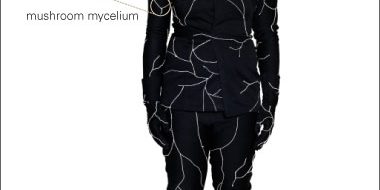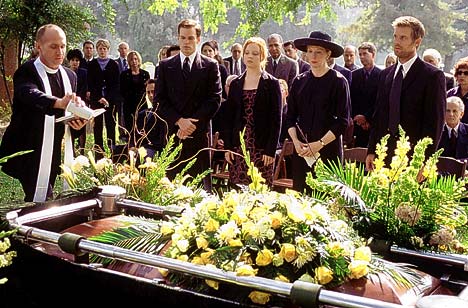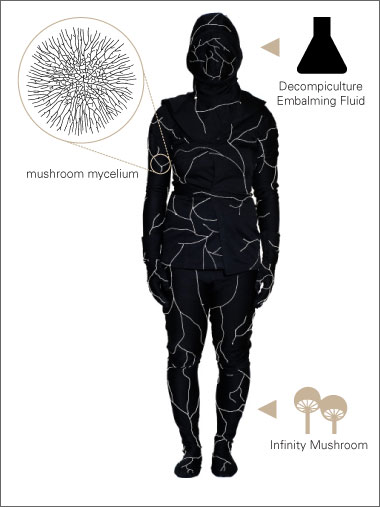Let’s face it, everybody dies.
Last October, Earthlings reached a staggering population of 7 billion hungry inhabitants. Meanwhile various estimates speculate that our world will indefinitely sustain a global community of no more than 4 to 16 billion Homo sapiens. Our numbers continue to grow at an alarming rate, igniting urgency to favor renewable rituals across our lives, and beyond our deaths.
We honor our dead, but neglect to hallow the ground in which they rest.
In Funerals: A Consumer Guide, the U.S. Federal Trade Commission indicates that a modest funeral now averages $6,000 for just the casket and vault. Flowers, limos, obituary notices, and stationary will easily drive the total beyond $10,000.
Ironically, mourners pay respects to loved ones through strange rituals founded on the fear of death and eagerness to deny impending decomposition. Consequently, western style internment pickles people with chemical preservatives to delay their return to dust. We go to ground as biohazards, pumped full of formaldehyde, plugged and repaired with cosmetic fillers that seal in as many as 219 toxic pollutants absorbed throughout our mortality.
You are what you eat, and it ain’t pretty.
Our bodies filter and store a cocktail of heavy metals and toxins embedded in fatty tissues. Poor dietary choices, unsafe food production methods, dental and medical implants, in addition to environmental pollution, expose us to contaminants like mercury, dioxin, hydrochloric acid, nitrogen oxide, sulfur dioxide, carbon monoxide, and dioxins.
Cremation releases heavy metals, like mercury, as toxic vapor. Chemical traces rise with greenhouse emissions, and settle to earth as dust to join our ecosystem. Trace pollutants may seem harmless at first, but repeated exposure to low levels of mercury, over long stretches of time, can harm the brain and kidneys.
Averaging $600, typical cremation seems to offer an inexpensive alternative to standard burials. But, apart from pollution, cremation brings little profit margin, prompting unethical funeral directors to push for pricey extras, or to omit information leading to economical solutions for grieving clients.
The Infinity Burial Project: A better way of living and dying
Jae Rhim Lee, Founder and Director of The Infinity Burial Project, recognized modern burial practices that signal a culture of fear and denial. Treating the dead with preservatives, or converting them to toxic vapor, reveals an alienation from our biological destiny with a dynamic ecology that prospers from our green and clean return to the food chain.
Ms. Lee talks about developing her mushroom burial suit during a short presentation at a TED conference. Funny and engaging, Jae Rhim Lee explains her efforts to promote a sustainable burial process that celebrates healthy decomposition.
After all, as biological creatures we share a physical landscape, adapted over the eons to recycle our meat and bones. Life eats death and thrives on decay by converting corrupt flesh to a vital biodegradable resource .
Click here to watch Jae Rhim Lee’s presentation at the TED conference.
From Song of Myself by Walt Whitman
“I bequeath myself to the dirt to grow from the grass I love,
If you want me again look for me under your boot-soles.
You will hardly know who I am or what I mean,
But I shall be good health to you nevertheless,
And filter and fibre your blood.
Failing to fetch me at first keep encouraged,
Missing me one place search another,
I stop somewhere waiting for you.”
Related articles
- What might mushrooms, pollution and burials have in common? (sueliburd.wordpress.com)
- The Borowitz Report (seniorsforademocraticsociety.wordpress.com)









